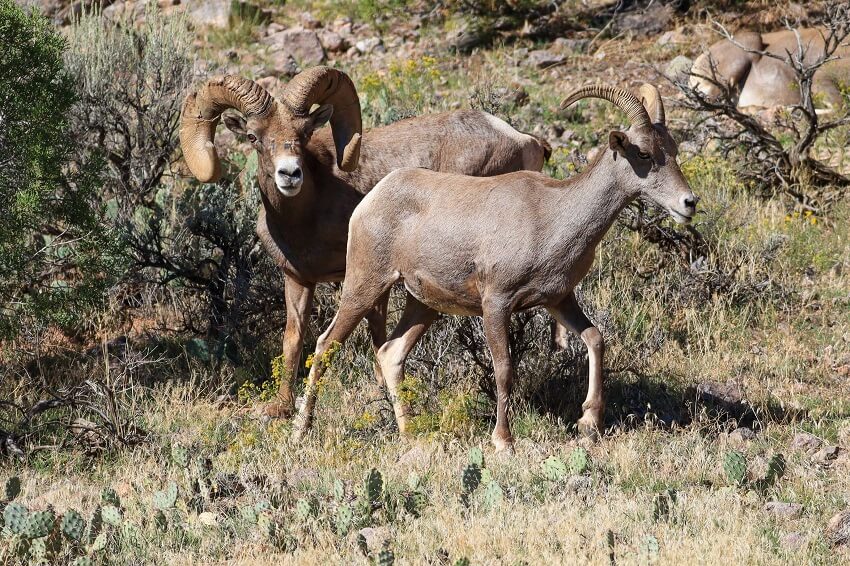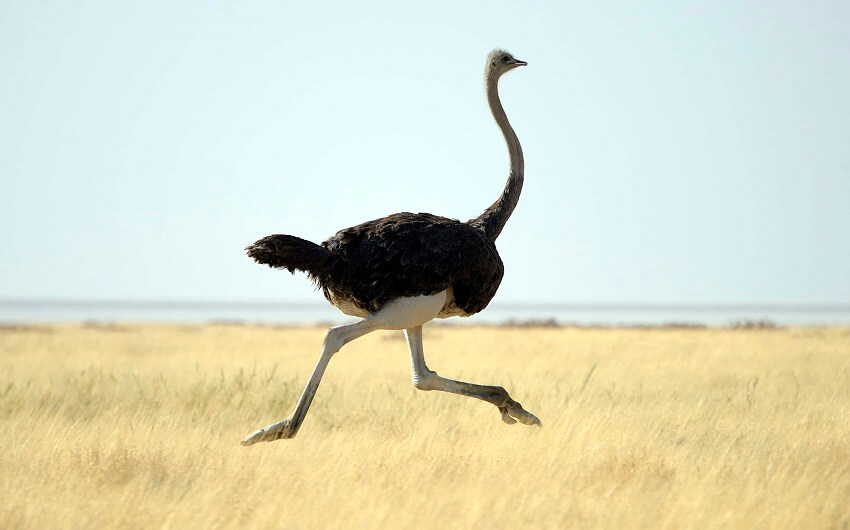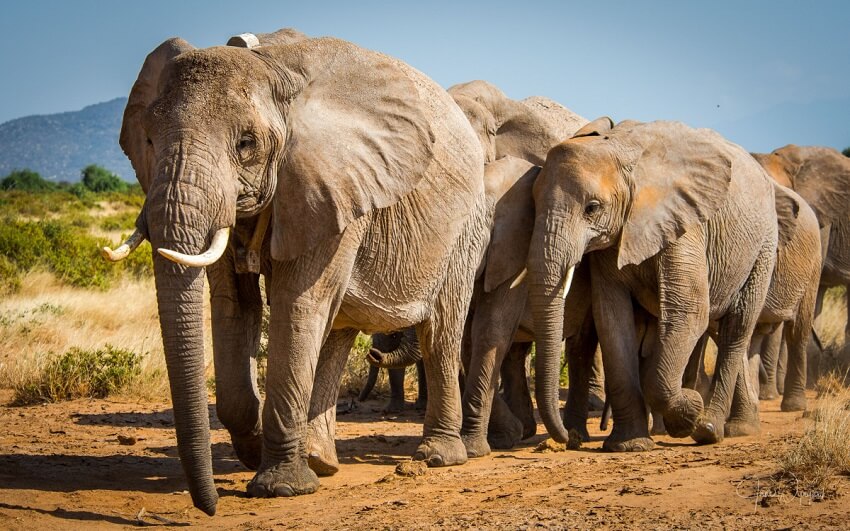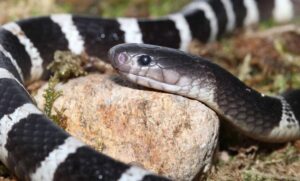Deserts are extremely arid and are one of the most hostile environments on the planet. It’s estimated that about 33% of the Earth’s surface is desert, and while most people think of deserts as barren wastelands, you can find a wide variety of wildlife and plants that have adapted to survive in these dry regions. Join KnowAllAnimals as we explore a list of “Large Desert Animals” in the following article!
1. Large Desert Animals: Amazing Creatures of the Harshest Habitats
The desert is a particularly harsh area for animal and plant survival. However, some animals with incredible adaptive abilities still thrive here. Below is a list of some of the largest desert animals. Let’s explore them together!
1.1. Bighorn Sheep
Native to North America, bighorn sheep are species that inhabit rocky, mountainous regions. Bighorn sheep can be found in the Mojave, Sonoran, Chihuahuan, and Great Basin deserts, which are the four major desert landscapes in North America.
Scientifically known as Ovis canadensis nelsoni, these are animals that have evolved to adapt and survive in extreme temperatures. Their bodies can withstand the significant temperature fluctuations between day and night in the desert.
They can also survive with minimal water and can maximize water absorption through their food. Bighorn sheep have the ability to lose up to 30% of their body water, and a single drink of water can help them recover quickly.
These amazing animals are incredible climbers, and their hooves provide them with excellent traction and balance. They can stand on small ledges just about two inches wide, which is very useful for escaping predators like coyotes, wolves, and mountain lions.

1.2. Gobi Bear
The Gobi bear (Ursus arctos gobiensis) is the only type of bear capable of withstanding the harsh heat of the desert. The Gobi bear is a subspecies of the brown bear and is native to western Mongolia in the Gobi Desert. Listed as critically endangered, the Gobi bear is one of the rarest bears on the planet. This bear is the only one known to use a desert habitat as its home, and it’s estimated that only about 51 individuals remain in the wild.
Gobi bears are small brown bears, adapted to living in mountainous and flat desert environments. They are omnivores, eating berries, wild onions, rodents, insects, and vegetation they can find. Gobi bears are primarily herbivores, with only about 1% of their diet consisting of meat. Their bodies are highly efficient at storing fat and water.
The changing climate of the Gobi Desert and environmental destruction from mineral mining are the main reasons for the decline in the Gobi bear population. Currently, no Gobi bear populations exist in captivity, and only a small number remain in the wild.
1.3. Ostrich
The ostrich is the largest bird in the world and is flightless due to its size. Ostriches have incredibly strong hind legs, and this bird can run up to 43 miles (about 70 km) per hour. There are two living species of ostriches in the world: the common ostrich (Struthio camelus) and the Somali ostrich (Struthio molybdophanes). The common ostrich is the larger of the two and is also more commonly found in desert habitats. Common ostriches are native to Africa and live in the continent’s savannas and deserts.
Male ostriches are generally larger than females. The legs of these large birds are incredibly powerful, allowing them to cover 3 to 5 meters in a single stride. They only have two toes, which helps them reach greater speeds. Ostriches have large wings, but they cannot fly and instead use them for balance when moving at high speeds.
Ostriches are omnivores, but most of their diet is plant-based. They eat things like roots, seeds, leaves, and fruit, as well as lizards, insects, and snakes. Despite their seemingly simple diet, these animals can kill much larger animals. They have powerful legs with sharp claws that can inflict fatal injuries and lacerations. These large birds live together in small herds of 10 members and can sometimes form groups of up to 100 individuals.

1.4. Kalahari Lion
The lion is one of the largest big cats in the world and is an incredibly adaptable species. Native to Africa, lions live in savannas, grasslands, shrublands, open plains, and sometimes even forests. In Africa, you can find several subspecies of desert lions living in the Sahara, Namib, and Kalahari deserts. While lions are not always found in the desert, they are some of the largest animals that can live there.
Lions that live in the desert also have slightly longer legs than other subspecies, which helps them travel longer distances. Because deserts lack water, desert lions can also go for long periods without drinking and can absorb water from the blood in their prey.
1.5. Donkey
Wild donkeys are a very resilient species, and they can survive in the incredibly arid climates of the desert. Donkeys live in a variety of deserts throughout North America, but they are originally native to North Africa. Not only are donkeys one of the largest animals in the desert, but they are also one of the best adapted to this environment. They have large ears that help to dissipate heat, and their grey coat helps them reflect the harsh sun.
Donkeys can also go for long periods without water and can lose 30% of their body water without serious consequences. It’s estimated that they can go for about a week without water. Wild donkeys vary greatly in size, with the largest reaching up to 260 kg. The strength of a donkey allows it to carry up to 60 kg of goods on its back.
1.6. Camel
Camels are one of the first animals people think of when they think of the desert, and they are also one of the largest creatures living in this arid environment. There are two species of camels: the Bactrian camel (Camelus bactrianus) and the Dromedary camel (Camelus dromedarius). The most common camel is the Dromedary, which makes up about 90% of all camels on Earth. The Bactrian camel, while rare, is heavier and lives in the Gobi Desert.
Camels have been domesticated as they are well-adapted to survive in harsh desert environments and can travel long distances without water. Most people think that a camel’s hump is used to store water, but it actually stores fat. Storing fat helps them survive when food is scarce, which is common in deserts. Camels store water in their blood and can go for up to 15 days without a drink.

1.7. Desert Rhino
The desert rhinoceros is a subspecies of the black rhino that has adapted to live in the desert. This subspecies has slightly different adaptations and a unique lifestyle to help them survive in their desert habitat. Desert rhinos can go two to three days without water and are typically nocturnal to avoid the heat of the sun. They are also dark gray, which reflects light.
Desert rhinos are extremely mobile and are capable of surviving in a variety of different habitats. The worldwide decline in rhino populations is due to hunting and poaching for their horns. The black rhino, along with the Javan and Sumatran rhinos, are considered critically endangered. Desert rhinos are extremely large, and they spend most of their time foraging for food and water.
1.8. Giraffe
The giraffe is the tallest terrestrial animal still living on our planet and is also one of the heaviest animals that live in the desert. Giraffes are native to Africa, and the desert is just one of the many environments they inhabit. Open woodlands, grasslands, and savannas are some of the other habitats giraffes live in, with their range extending throughout sub-Saharan Africa.
There are four existing species of giraffes: the Masai giraffe, Northern giraffe, Reticulated giraffe, and Southern giraffe. The Masai giraffe is the largest of them all and also inhabits semi-desert regions.
1.9. African Bush Elephant
Out of all the animals living in the world’s deserts, the African bush elephant (Loxodonta africana) is the largest. They are also the largest land animal still living today. African bush elephants also have the longest gestation period of any animal, with females pregnant for 22 months.

2. FAQs
1. What are some examples of large desert animals?
Examples include camels, desert elephants, ostriches, and Arabian oryx.
2. How do large animals survive in the desert?
They adapt through storing water, regulating body temperature, and changing their activity during the day.
3. Are camels the largest animals in the desert?
Yes, camels are among the largest and most iconic desert animals, known for their ability to endure extreme heat.
4. Do desert elephants still exist today?
Yes, desert elephants still live in parts of Namibia and Mali, although they are considered rare.
5. Why are large desert animals important to the ecosystem?
They help maintain ecological balance, provide resources for predators, and contribute to the survival of desert habitats.
3. Conclusion
Large desert animals are not only impressive because of their size but also for their incredible ability to adapt to harsh environments. They are a clear testament to the diversity and power of nature, playing a crucial role in maintaining the ecological balance of these arid wastelands.



